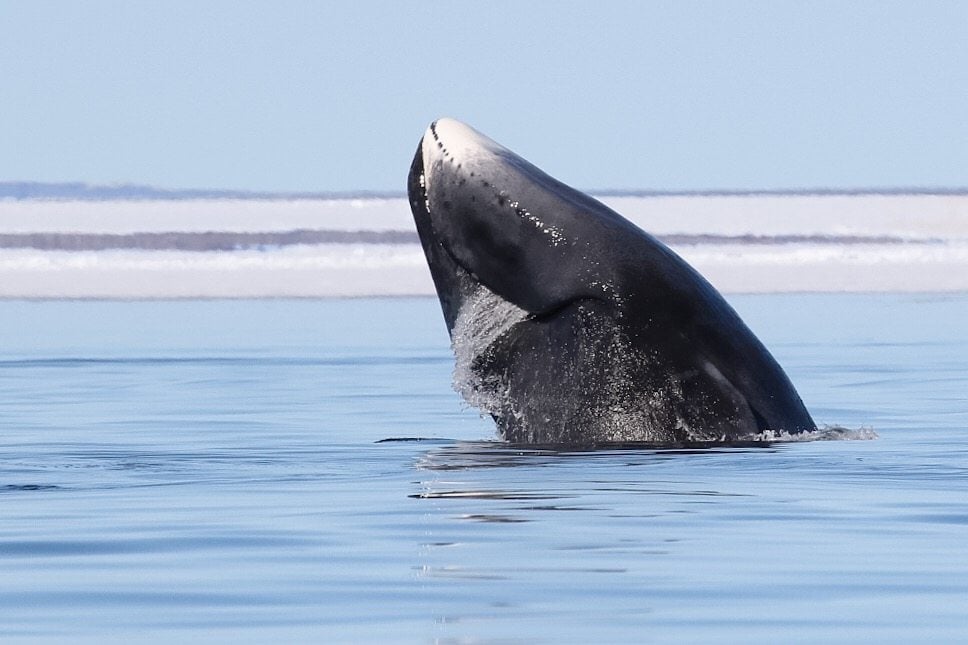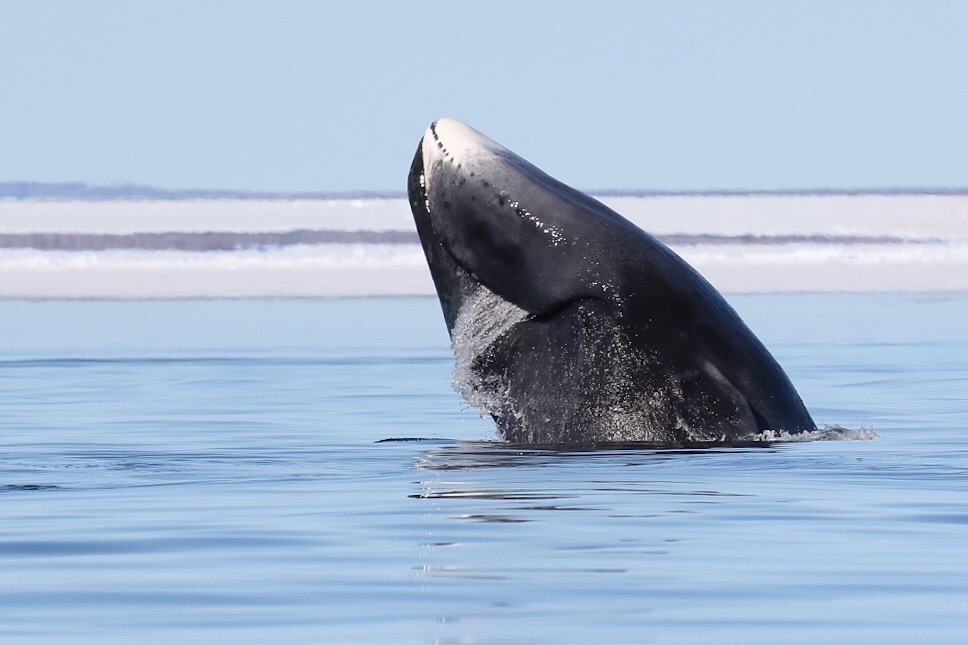When it comes to whale watching destinations, the Arctic isn’t always the first to come to mind. What many travellers don’t know is that some of the biggest and most beautiful mammals can be found in the Arctic.
A total of 17 different types of whales inhabit Arctic waters, and three whale species live in the Arctic year-round. Those three species just so happen to be some of the most sought-after and rare whales to spot in the world: narwhal, beluga and bowhead whales. Travellers seeking opportunities to see these spectacular animals often ask us how to see them on whale watching trips in the Arctic. Some of the best places to view these Arctic whales are in the Canadian Arctic, specifically Nunavut, making it an excellent whale watching destination.
Learn more about these beautiful Arctic whales and how to see them on whale watching trips in the Arctic:
Narwhal (monodon monoceros)
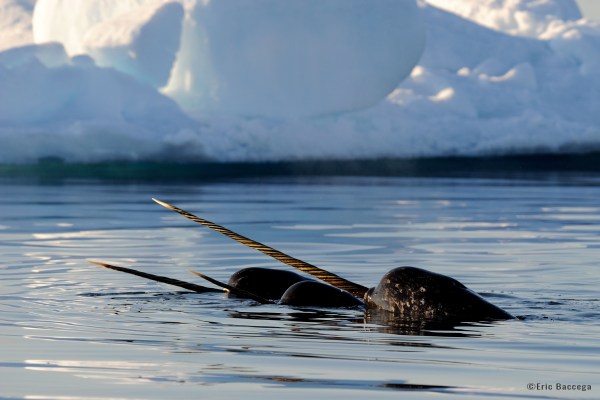
The elusive narwhal is one of the most popular whale species to see in the Arctic. Narwhal live year-round in the Arctic, generally above 61°N, and have never been successfully kept in captivity. The only way to see them is in the wild. Known as the “unicorn of the sea” because of their iconic tusk, there’s no wonder wildlife enthusiasts from around the globe travel to the edge of the Earth to catch a glimpse of these mythical whales.
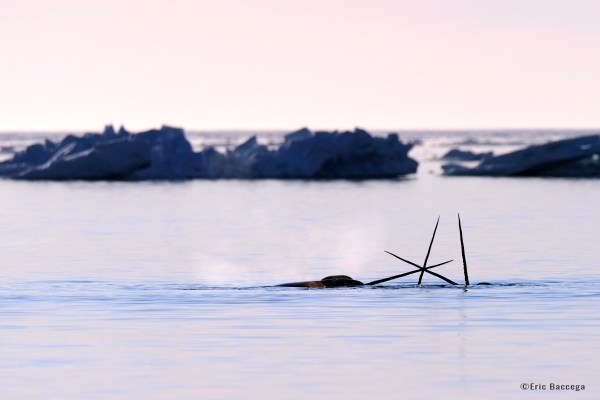
The Canadian Arctic is home to an estimated 80,000 narwhal, approximately 75% of the world population.
The best time of year to see narwhal is in spring and summer. In May and June, narwhal can be spotted at the floe edge of Lancaster Sound, at the northern reaches of Baffin Island, Nunavut, during the annual migration to their summer feeding grounds. Travellers can get rare opportunities to view narwhal up-close from the sea ice and even chances to snorkel or kayak in their presence.
You can get the chance to see narwhal on Narwhal & Polar Bear Safari and Ultimate Floe Edge Explorer.
Learn more about narwhal here: 10 Fun Facts about Narwhal
Beluga (Delphinapterus leucas)
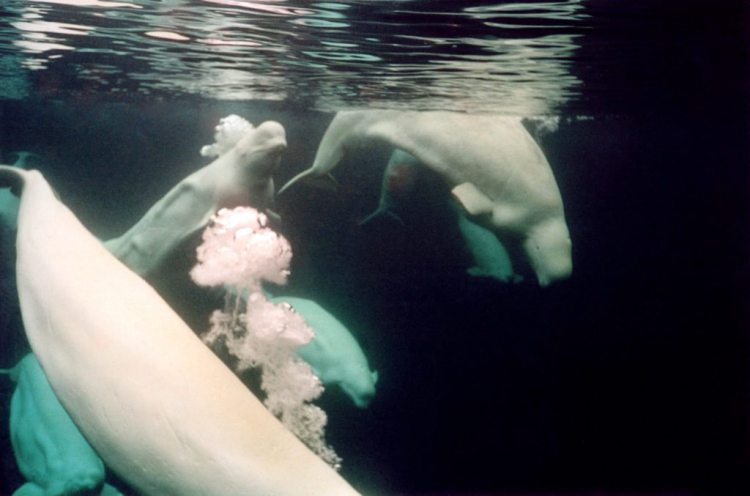
Beluga are one of the most recognizable and popular whales because of their white colour, “smiling” mouth and comical demeanor. A smaller species of whales, beluga are social mammals, often seen in pods. They inhabit Arctic and sub-Arctic waters, especially the Canadian Arctic.
An estimated two-thirds of the world’s population of beluga (approximately 150,000 whales) summer in Canadian waters.
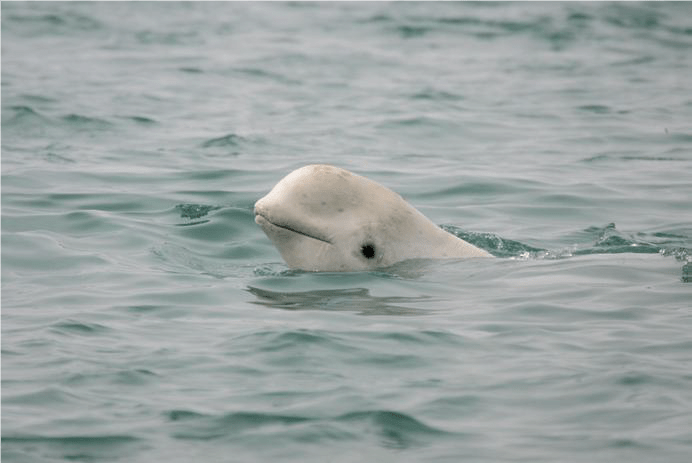
Beluga have adapted to the sea ice by evolving without a dorsal fin. The sea ice is important for beluga’s food web as well as protection from predatory killer whales. This makes the floe edge an excellent place to spot pods of beluga. You can get opportunities to see them at the floe edge on Narwhal & Polar Bear Safari and Ultimate Floe Edge Explorer.
As they migrate south, the summer months also offer great opportunities to encounter beluga. You can get the chance to view and possibly even kayak in the presence of beluga in July and August on Polar Bears & Whales of Cumberland Sound.
Bowhead whales (Balaena mysticetus)
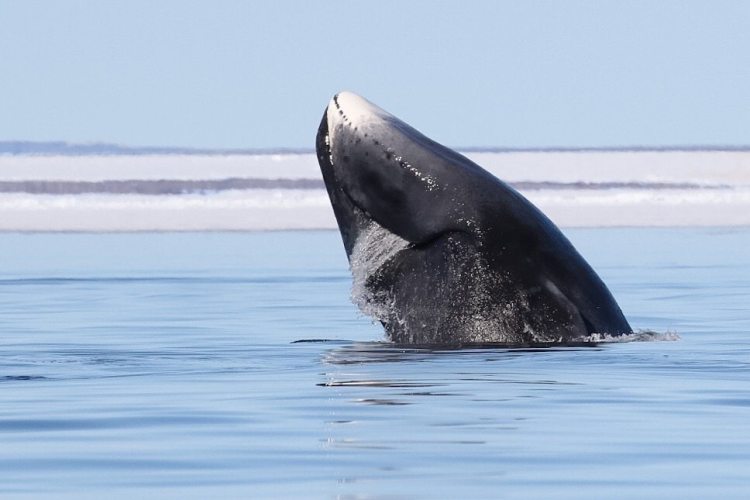
Giant bowhead whales live year-round in the Arctic. The have an average size of 15 to 18 m (49 to 59 ft), but have been reported up to 20 m (65 ft), and can weigh up to a whopping 100 tonnes (220,462 lb)! Bowhead are known for their massive bow-shaped head that make up one-third of their total length. They use it to break through sea ice as thick as 60 cm (23 in). Like narwhal and beluga, bowheads also lack a dorsal fin, helping them navigate their icy environment.
Approximately 90% of the estimated 20,000 bowhead whales spend summers in Canadian waters. In summer, they inhabit waters throughout Davis Strait, Baffin Bay, Lancaster Sound, and the channels and fjords of the Arctic Archipelago, Hudson Strait, Foxe Basin and northwest Hudson Bay.

In May and June, you can get chances to see them at the floe edge of Lancaster Sound on Narwhal & Polar Bear Safari and Ultimate Floe Edge Explorer.
In July and August, bowhead whales can be seen in Cumberland Sound on Polar Bears & Whales of Cumberland Sound.
In August, you can also get chances to see bowhead whales as you explore near Qikiqtarjuaq by boat on Polar Bears & Glaciers of Baffin Island. In this area, we discovered a bowhead molting location that we return to each year on this safari in hopes of witnessing molting behaviour.
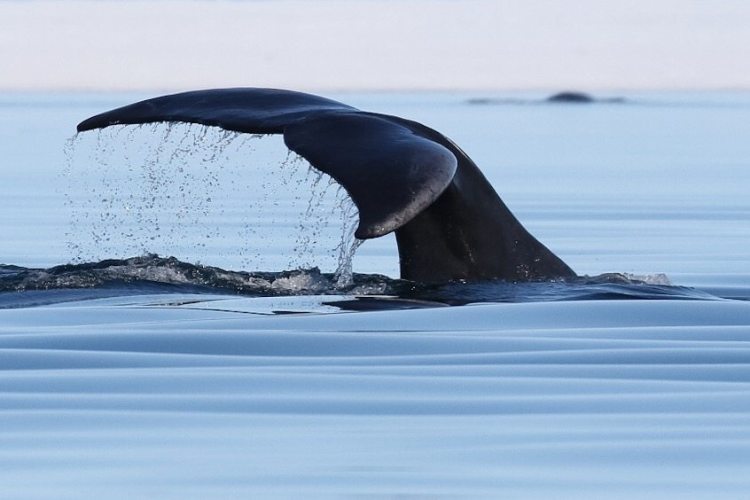
Top Whale Watching Trips in the Arctic
Want to go whale watching in the Arctic? We offer opportunities to see whales in the Arctic from May to August:
Narwhal & Polar Bear Safari
Departures in May & June
An exclusive fly-in floe edge adventure with opportunities to view polar bears, narwhal, beluga and more.
Ultimate Floe Edge Explorer
Departures in June & July
The private floe edge experience utilizes aerial tours to explore the High Arctic in search of wildlife including polar bears, narwhal, beluga, bowhead whales and more.
Polar Bears & Whales of Cumberland Sound
Departures in July & August
Discover iconic Cumberland Sound by land and boat on this summer adventure. Get opportunities to view wildlife including polar bears, bowhead whales, beluga, walrus and more.
Polar Bears & Glaciers of Baffin Island
Departures in August
Experience the best of Arctic summers, with mild temperatures, long days, seemingly-endless sunset, soaring icebergs and glistening glaciers. Explore by land and boat for chances to encounter wildlife including polar bears and bowhead whales.
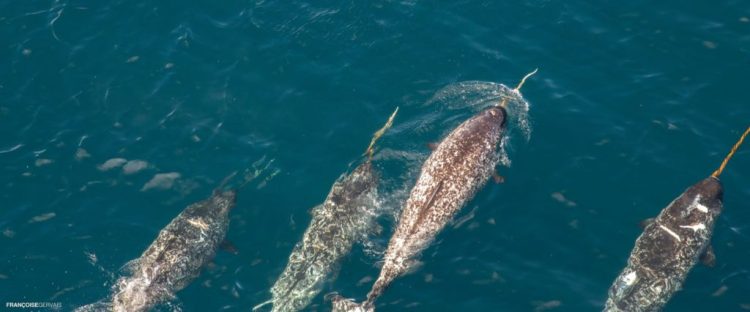
Contact us to start planning!
Whether you want to see narwhal, beluga or bowhead whales, our Arctic Travel Advisors can help you pick the perfect whale watching trip in the Arctic. If you prefer to travel privately, let us know. We can let you know all the options and build a custom tour crafted to your interests. Contact us here.



